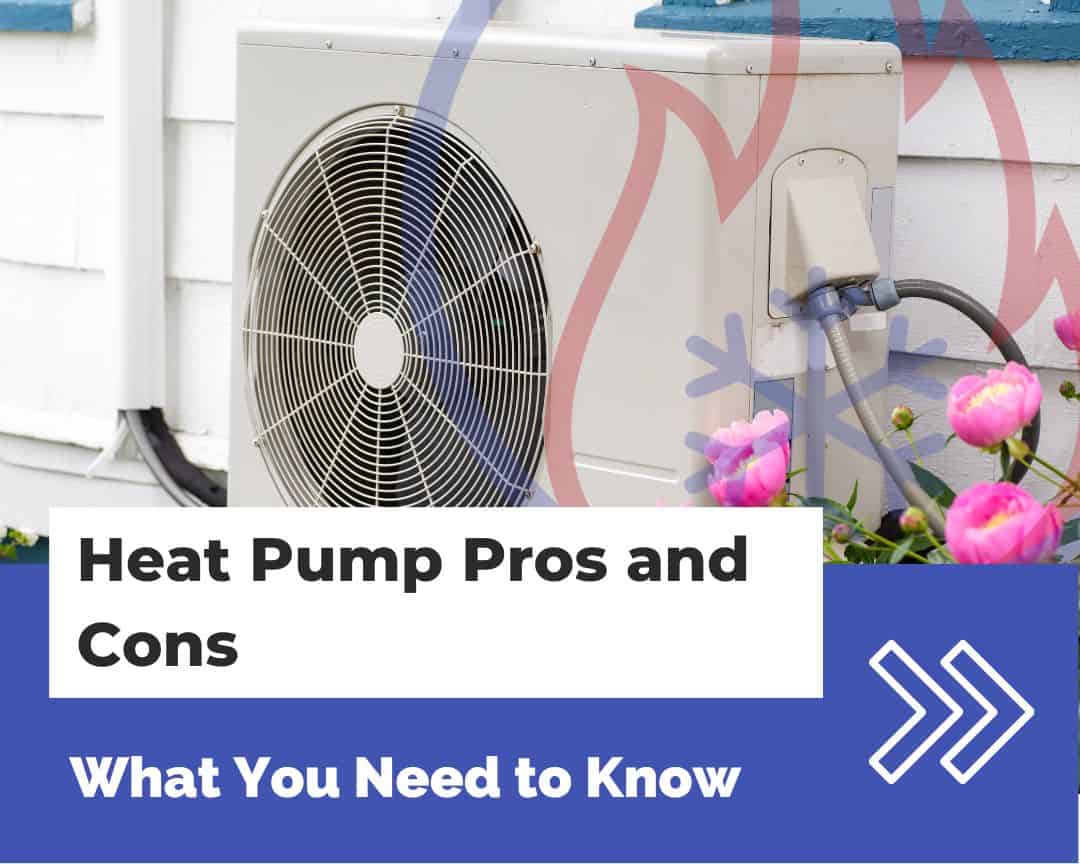In the constantly changing world of residential and commercial buildings, it is important to stay up-to-date with changes in building technologies. With that being said, there has been an increase in the adoption of heat pumps as a building technology over the last few years, instead of just in cold climates.
The market for heat pumps has grown at such a fast pace because they offer so many benefits over traditional heating methods. In this article you will learn everything about heat pumps, including pros and cons and best practices.
What is the Difference Between a Heat Pump and a Heater?
The main difference between a heat pump and a furnace is that a heat pump doesn’t create heat . A heat pump is not a heater and doesn’t increase the temperature of the air you breathe. A heat pump simply transfers heat from one place to another. You can think of a heat pump as a large air conditioner that sits outside your home.
Inside your home, you have normal heating equipment – furnaces and boilers – that produce heat. Outside your home, there is a heat pump that produces cool air. In the summer, when the temperature outside is hot, the heat pump absorbs heat from the inside of your home and exhausts it outside. In the winter, when the temperature outside is cold, the heat pump absorbs heat from the outside air and exhausts it inside your home.
Pros of Installing a Heat Pump
Long-Term Savings – Many homeowners find that heat pumps are a much more economical alternative to traditional heating. Heat pumps are very efficient, meaning that they use very little energy to produce cool, indoor air. Some models can even be set to turn on at night and produce energy from the outside air.
Increased Comfort – The main reason that people switch from conventional heating to a heat pump is to make their homes more comfortable. Heat pumps can make any room indoors feel substantially cooler than the outdoors.
Reduced Energy Bills – One of the best reasons to invest in a heat pump is to reduce your energy bills. If you are looking to decrease your monthly energy expenses, a heat pump is an ideal choice.
Improved Indoor Air Quality – The indoor air quality in your home can be significantly affected by the heat coming out of your furnace. With a heat pump, the air that comes out of your vents is considerably cooler, making your indoor air much cleaner.
Cons of Installing a Heat Pump
Initial Cost – When it comes to making such a major change to your home’s heating and cooling system, the initial cost of installing a heat pump can be quite high. This cost, however, is more than made up for by the reduced energy bills that come with this technology.
Post-Installation Installation Issues – Like all major home repairs, there are certain risks involved with installing a heat pump. Many homeowners have reported issues with the installation process, including faulty heat pump units, poor installation, and broken pipes.
Not Suitable For Extreme Climates – While heat pumps are ideal in most climates, they are not the best choice for extreme cold climates, such as Alaska and Canada.
No Maintenance – Unlike furnaces and boilers, which require regular maintenance and cleaning, heat pumps do not require any kind of maintenance. This means that you don’t have to clean up leftover refrigerant from a heat pump, which is a common complaint among homeowners.
Lack of Support From Manufacturers – Although heat pumps are a proven technology, many manufacturers still don’t offer support for them.
Best Practices for Installing a Heat Pump
Use a Licensed Contractor – When hiring a contractor to install a heating or cooling system, you want to make sure that he or she is licensed and insured. This makes sure that the contractor does not pose a danger to you or your home.
Test the System – It is important to test the system before you turn it on. This way, you can identify any potential problems with the system, such as corroded pipes or broken pipes.
Check the Water Heater – You should also make sure that your water heater is not affecting your system. Most water heaters heat water to a temperature between 120 and 140 degrees, which is too high for a heat pump.
Keep the Area Clear – When installing a heat pump, make sure that there is no debris in the area, and that it is accessible to the parts that need to be serviced.
Avoid Overheating – It is important to keep an eye on the system to make sure that it does not overheat. Although most heat pumps are designed for continuous operation, you want to make sure that you turn the system off when you are not using it.
Conclusion
The heat pump is one of the most efficient, long-term investment for your home. These systems work by moving heat from outside to inside, rather than creating heat inside the home. They are ideal for areas where temperatures are cooler, such as areas near the ocean or near a large body of water.
They are also a good choice for temperate regions, such as parts of the US Northwest or the US South. Heat pumps are a great alternative to traditional heating methods, but they are not ideal for extreme cold or hot climates. If you are interested in a heat pump, be sure to research the benefits and potential drawbacks of this technology before making a decision. Learn more…

